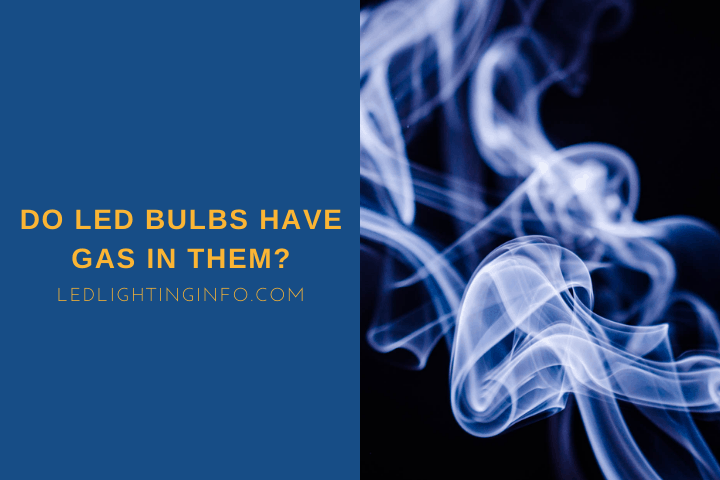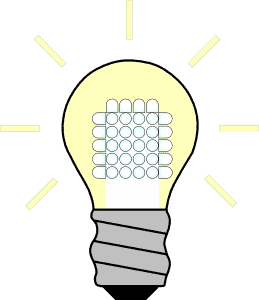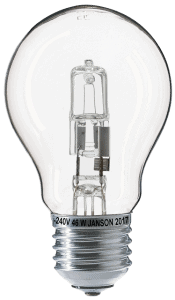The more you read about LED technology, the more you understand how it is a much better upgrade than the previous bulbs we have been using.
Not only are LED bulbs better in bringing down your carbon footprint, helping your goal of being environmentally conscious, or saving your home or office a whole ton of money over the years…
But when comparing the safety and risk of other bulbs, it can be seen that LED bulbs are a much safer choice for your home.
LED bulbs do not have any kind of gas inside them to function. Other bulbs on the market like incandescents and CFLs have gas inside and it has proved to be dangerous.
Is There a Gas In LED Bulbs?
While most traditional bulbs on the market are filled with gasses for them to function or increase life spans, LED bulbs do not contain any gasses.
That is because an LED works electronically. Functionally, an LED performs as a computer, using advanced tech and electronic chips installed at the base of the bulb.
If you’ve ever wondered how exactly an LED gives light, read on for a short, sweet, and technical overview.
The LED, or light-emitting diode, is a semiconductor, and it controls the amount of electricity that flows through it. At the heart of the diode is a p-n junction, of which electrons jump across and change their state.
The extra energy released as electrons change their state causes photons to be emitted.
These photons then interact with the other materials used in the LED and the current running through it to give off visible light! This property is called electroluminescence. And that’s LED tech in a nutshell.
Therefore, no mechanism involves gases in an LED. However, a broken electronic always needs to be treated with caution. LED bulbs do contain small amounts of nickel and lead but are not treated as hazardous waste.
So not only are LED bulbs safer with the absence of any gas inside, but they also are functional if the glass or plastic dome covering the diode is broken or removed for any reason. Useful, but unsightly!
What Types of Bulbs Are Filled With Gas?
Incandescent bulbs were once the most commonly used, and they worked when electricity passed through a tungsten filament inside the glass body gets so hot that it turns white.
The most common type of gas mixture found in an incandescent bulb is Argon and Nitrogen. Other gases are also sometimes seen, and they are Helium, Neon, Krypton, and Xenon.
The reason these bulbs are filled with these gases has to do with the bulbs’ longevity. The tungsten filament evaporates and deteriorates, reducing the bulb’s life, as the filament heats up to produce light.
Therefore, the gases are added to the bulb to slow down this evaporation of tungsten atoms.
These are all inert gases, which means they do not react with the heated tungsten.
Halogen
These are upgraded incandescent bulbs. They differ from them in that halogen contains a small additional amount of any halogen gas, typically bromine or iodine.
The halogen gas reacts with the tungsten and deposits the escaping tungsten atoms back to the filament, maintaining the life of the bulb for much longer than incandescents.
An added advantage of the addition of the gas is that a halogen bulb can burn MUCH hotter than incandescent, thus emitting a much brighter light.
In fact, the heat from the bulbs is so high that a glass body is no longer sufficient, and is replaced with quartz which can withstand much higher temperatures. That’s why a switched on halogen bulb is extremely hot to touch.
Unfortunately, halogen bulbs are seen as a significant safety risk compared to modern LED bulbs. As halogen can spark a fire if they come into contact with flammable materials.
Child Safety Europe recommends LED bulbs for children’s lamps. And they give a list of guidelines on how to use halogen bulbs, such as keeping them away from pillows, duvets, and curtains.
These warnings are not to be taken lightly. As recently as 2019, a tragic incident involving a child took place in the UK where it is believed his halogen lamp got knocked over and set the lampshade alight.
Which Gas Is Used In Fluorescent Tube Lights?
An FTL or a fluorescent tubular lamp, or a tube light is also filled with gases for them to function. This tube light is long and straight and gives very little shadow, which is why offices and hospitals use them widely.
Another version of the tube light is the CFL. This stands for compact fluorescent lamp and are swirly in shape and have an electric ballast.
Both Tube light and CFL bulbs are filled with Argon gas and coated with Mercury vapor. The reaction between the electricity running through the tube of the bulb and the mercury vapor allows the generation of invisible ultraviolet light.
This UV light, in turn, reacts with the fluorescent phosphor coating and energizes it to produce the visible light.
Un-coated tubes are used to produce ultraviolet “black” lights.
Each additional gas has a unique spectrum and in an un-coated tube will emit the following colours:
- Helium- Pink
- Neon- Red-orange
- Argon- Blue
- Krypton- Pale green
- Xenon- Pale blue
Contact with the mercury vapor inside fluorescent lights is extremely harmful if the bulb breaks, even though the quantity is small, and it must be disposed of as hazardous waste.
And it is not just a rash or flu kind of hazardous. Mercury is a toxic heavy metal that can cause severe damage to the brain, nervous system, kidneys, lungs, and other vital organs. Pregnant women, infants, and young children are especially at risk.
Thankfully, mercury-ridden fluorescent bulbs are slowly reducing in demand. They are being replaced by LED bulbs owing to their safe and non-toxic components, and of course, the superior energy efficiency.
Final Words
The lighting industry has come a long way from gases filled bulbs, which are not only energy inefficient and cost you money, and raise ambient temperatures, but are also straight-up unsafe due to the gases in them.
Take the safe and wise route to install LEDs around the house, and you’ll be mentally at ease.
Have you had bulbs broken in your home or office?
How did you dispose of the broken bulb?
Looking for an LED bulb but not sure what type you need?
Check out my free bulb picker and select the right bulb within few clicks.



